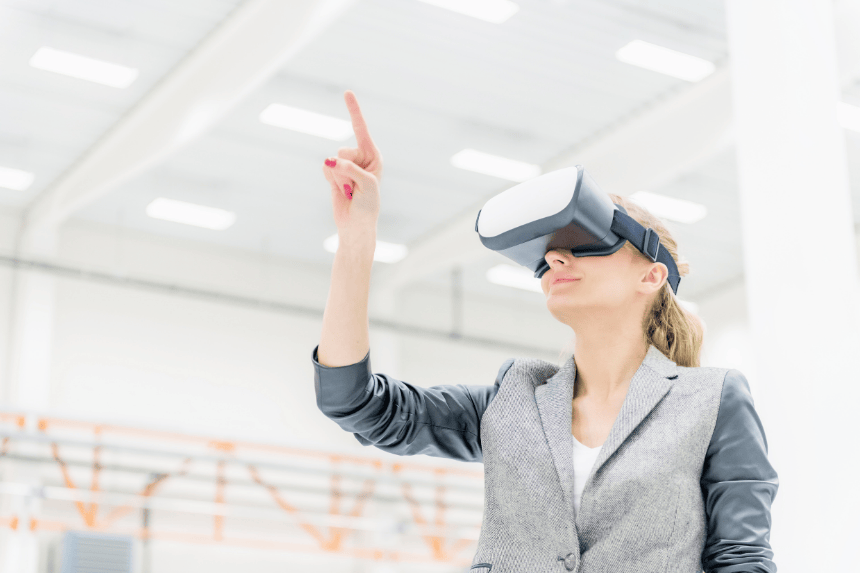
Legacy courses contain critical institutional knowledge, but outdated formats and static delivery limit their ability to build future-ready skills. Modernization requires leveraging cutting-edge learning techniques—AI-driven personalization, immersive simulations, and skills-based pathways—to accelerate workforce proficiency and business impact.
This article presents six strategic approaches to transform legacy content into agile, high-impact learning experiences that drive workforce readiness and business success.
-
Conduct a Strategic Audit for Modernization
Evaluate Content Relevance and Organizational Alignment
A thorough audit is the first step in modernizing legacy courses. Organizations must assess content alignment with current business objectives, ensuring that learning initiatives drive measurable performance improvements. This involves:
- Pinpointing content obsolescence by analyzing industry shifts, regulatory changes, and business priorities.
- Mapping course objectives to strategic goals to ensure direct impact on workforce readiness and operational efficiency.
- Engaging key stakeholders—business leaders, L&D teams, and end users—to determine priority courses for modernization.
Use Data to Identify Gaps and Improvement Areas
Modernizing learning programs requires a data-driven approach. Metrics such as engagement rates, learner proficiency levels, and course completion trends offer valuable insights into where updates are most needed. Key steps include:
- Extracting insights from learner behavior analytics to uncover common friction points and content blind spots.
- Deploying AI-driven diagnostics to identify individual and organizational skill gaps with precision.
- Benchmarking against market leaders to ensure courses align with best-in-class industry practices.
Choose the Most Effective Learning Approaches
Different courses require different modernization strategies. Organizations should consider:
- Microlearning for on-the-job reinforcement, enabling rapid recall and practical application.
- Blended learning to combine self-paced content with expert-led coaching, optimizing depth and engagement.
- Immersive learning (AR/VR/XR) to develop high-stakes skills through realistic, interactive simulations.
-
Align Learning Objectives with Business Outcomes
Shift from Knowledge Transfer to Competency-Based Learning
Traditional learning programs focus on content consumption, whereas modernized approaches prioritize skill acquisition and application. Organizations should:
- Define proficiency milestones to transition from passive learning to hands-on performance.
- Embed real-world scenarios and case studies that mirror job responsibilities and decision-making challenges.
Define Success Metrics Beyond Completion Rates
Many legacy training programs measure effectiveness through completion rates, but this provides little insight into actual performance gains. Modern learning initiatives should track:
- Time-to-proficiency metrics to gauge how quickly learners transition from novice to expert.
- Behavioral impact assessments that measure tangible changes in workplace performance.
- Operational efficiency improvements linked directly to enhanced skill application.
Integrate AI-Driven Assessments
AI-powered assessments help tailor learning experiences to individual needs. These include:
- Dynamic, adaptive testing that personalizes difficulty levels based on learner responses.
- Predictive learning analytics that forecast future skill gaps and recommend targeted interventions.
- Automated performance dashboards that provide real-time insights for both learners and business leaders.
-
Leverage Emerging Learning Trends
AI-Powered Personalization
Artificial intelligence enables personalized learning at scale by adapting content based on real-time learner performance, preferences, and behaviors. Key benefits include:
- AI-generated learning paths that dynamically adjust to skill mastery levels.
- Conversational AI tutors that provide instant, contextualized learning assistance.
- Automated content curation engines that ensure continuous relevance and engagement.
LIFOW (Learning in the Flow of Work)
Employees today need learning that integrates seamlessly into their daily tasks. LIFOW strategies include:
- Embedded AI assistants in enterprise tools to offer real-time guidance without disrupting productivity.
- On-demand knowledge bases accessible via voice and chatbot interfaces.
- Context-aware learning nudges that surface at critical workflow moments.
Immersive Technologies
Augmented Reality (AR), Virtual Reality (VR), and Extended Reality (XR) enhance learning by providing interactive, experiential training. These technologies:
- Recreate real-world job environments to simulate high-stakes decision-making.
- Enhance procedural learning through virtual practice and experiential repetition.
- Reduce on-the-job training costs by shifting complex learning to digital simulations.
Skills-Based Learning and Digital Credentials
Organizations must transition to a skills-based approach by:
- Developing structured, AI-mapped skills taxonomies that link training to specific job roles.
- Issuing stackable digital credentials that validate competency growth over time.
- Integrating applied learning challenges that require direct workplace application of acquired skills.
Data-Driven Learning Strategies
Advanced learning analytics enhance training effectiveness by:
- Leveraging predictive workforce analytics to anticipate future training needs.
- Applying A/B testing to course design to optimize learner engagement and retention.
- Delivering real-time performance insights that link learning impact to business results.
-
Enhance User Experience for Maximum Engagement
Design Mobile-First, Modular Learning Experiences
To support modern learners, organizations should:
- Develop responsive, device-agnostic learning modules for seamless accessibility.
- Implement just-in-time learning widgets that provide contextual guidance on demand.
- Utilize adaptive learning flows that adjust pacing based on learner proficiency.
Integrate AI-Driven Chatbots and Voice Assistants
AI chatbots and voice-enabled assistants provide real-time support by:
- Delivering instant answers within enterprise apps to minimize workflow interruptions.
- Facilitating AI-led coaching sessions that provide contextual, personalized guidance.
- Reinforcing learning through spaced repetition algorithms.
Gamification and Interactive Learning
Engagement can be enhanced through:
- Skill-based leaderboards and challenges that drive motivation through friendly competition.
- AI-driven scenario simulations that adapt in real-time to learner decisions.
- Cognitive engagement mechanics that sustain interest and deepen retention.
Accessibility and Multi-Device Compatibility
Inclusive design ensures that all employees benefit from training by:
- Integrating AI-powered accessibility enhancements like real-time captioning and speech-to-text.
- Designing voice-driven interfaces for hands-free learning experiences.
- Ensuring seamless synchronization across devices for a frictionless experience.
-
Drive NexGen ROI and Business Impact
Redefine ROI for Modern Learning
Traditional ROI models focus on training cost versus employee output. NexGen ROI evaluates:
- Organizational agility in responding to skill gaps.
- Customer satisfaction and operational KPIs impacted by upskilled employees.
- Risk mitigation through improved compliance and decision-making.
Align Learning Outcomes with Strategic Business Goals
Successful learning modernization requires:
- Direct linkage of learning data to enterprise KPIs.
- Real-time analytics to refine course content and delivery methods.
- AI-enabled forecasting to ensure continuous workforce readiness.
-
Phased Modernization for Rapid Skilling and Scalable Impact
Phase 1: Audit & Prioritize
Organizations should begin by identifying high-impact areas for modernization. This includes:
- Deploying AI-assisted audits to map learning needs against business priorities.
- Using skill heatmaps to pinpoint workforce capability gaps.
- Classifying content by strategic relevance to decide whether to refresh, redesign, or retire.
Phase 2: Prototype & Test
To minimize risk, organizations should:
- Run targeted, high-impact pilot programs with measurable business outcomes.
- Leverage AI-driven learner feedback loops to fine-tune content in real time.
- Validate effectiveness through workplace performance improvements.
Phase 3: Iterate & Scale
For sustained impact:
- Use predictive data analytics to continuously refine learning pathways.
- Scale proven models across business units to drive enterprise-wide transformation.
- Institutionalize a culture of continuous learning and agile skilling.
The Way Forward
Modernizing legacy courses isn’t just about content updates—it’s about building adaptive, data-driven learning ecosystems that anticipate workforce needs and drive measurable impact. Organizations that embrace AI, immersive experiences, and skills-based learning will accelerate upskilling, enhance workforce agility, and future-proof their talent development strategies.



